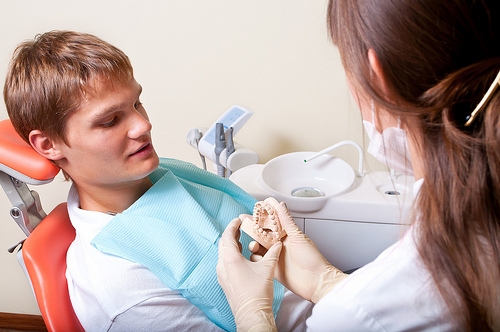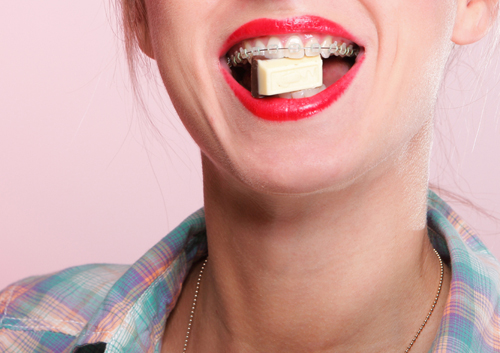October 13th, 2014

This is one of the most common questions that is asked at Iowa Orthodontic Solutions and, unfortunately, it does not have a simple answer. Just as every patient we see is unique, so is their treatment plan. Some patients have very simple problems which require less appliances and time, while other cases are much more complicated and may require multiple appliances and phases.
The treatment fee usually reflects the amount of orthodontic work required to complete the treatment plan. The only way to find out how much braces will cost is to schedule a consultation with Dr. Mark Guevarra. During your consultation, we will perform a complete oral examination, listen to your concerns, and explain how we will address your needs.
Our findings will include the cost of orthodontics and how long the treatment will take to complete. Give us a call today at our convenient location in Iowa for a consultation and discover how quickly we can make you smile!
October 6th, 2014

Now that October is upon us, Dr. Mark Guevarra and our team at Iowa Orthodontic Solutions wanted to send you a friendly reminder to schedule your orthodontic appointment prior to the end of the year to take full advantage of any flex spend, health savings, or insurance benefits that you may have.
The end of the year is always a busy time so make your appointment now so you don’t lose your available benefits! Give us a call today!
September 29th, 2014

Sticky, hard, and gooey: these candies fill your dopamine receptors with spasms of sugar-filled joy, but if you’re undergoing orthodontic treatment at Iowa Orthodontic Solutions to straighten your teeth, then these sweets are not so sweet. While you may have a Willy-Wonka-sized sweet tooth, there are some candies you’re going to have to avoid while wearing braces.
Here are five bracket- and wire-destroying culprits that Dr. Mark Guevarra and our team recommend leaving on the candy aisle and not put in your mouth, no matter how tempting they may be.
- Gum is sticky and stringy. It can get tangled like fishing net in your braces. You don’t want to be that boy or girl trying to pull knots of Wrigley’s out of your braces without being seen.
- All chewy, gooey candies need to be avoided. When you’re wearing braces, don’t even think about putting a caramel candy in your mouth. Caramel will not only stick to your braces, making it look as if you haven’t brushed your teeth in a week, but the gooey texture can pull apart the wires, and trigger an emergency visit to Iowa Orthodontic Solutions.
- Hard candy may seem like a safe choice, but it’s not. What’s the problem? Nobody ever just sucks on hard candy; sooner or later, we bite down on it. Biting a hard candy may cause part of your braces to snap. Furthermore, once the candy is broken into a bunch of little pieces, it’s not uncommon for one of those sugary shards to get wedged between your braces and teeth … and that’s a cavity waiting to happen.
- The taffy you enjoy getting at a seaside boardwalk is going to have to go on the back burner. Like caramel, taffy can pull apart and damage your braces. You don’t want to have your expensive orthodontic gear replaced.
- Please, just one lollipop? Nope. A lollipop is nothing more than hard candy on a stick. If you can’t have hard candy during orthodontic treatment, then you shouldn't have hard candy on a stick either.
Have any more questions about what you can and can’t eat when you have braces? Please give us a call at our convenient Iowa office to learn more, or ask Dr. Mark Guevarra during your next adjustment visit!
September 22nd, 2014

Parents of a certain age will no doubt remember the teen comedies of the 1980s. These movies typically included a character so wired up with orthodontic apparatus (elaborate metal braces, rubber bands, a mountain of headgear) that he or she looked like some sort of electrical machinery. In recent years, the technological advancements in braces have not only made this character a thing of the past, but if your child needs braces to fix crooked teeth, you no longer need to worry about him or her being called “brace face” with a “tin grin.”
Traditional braces use a system of archwires, brackets, and rubber bands to straighten and realign crooked teeth. Self-ligating braces that Dr. Mark Guevarra and our team at Iowa Orthodontic Solutions provide, by contrast, use specialized clips to hold the archwires in place instead of rubber bands. But what makes self-ligating braces so good?
- Self-ligating braces make it easier to keep your teeth clean because there are no rubber bands. Rubber bands collect food particles, and this can lead to an increase in plaque and decay. Have you ever tried to brush for two minutes with a mouth full of rubber bands? It’s tricky. Self-ligating braces improve oral health.
- Self-ligating braces are smaller and less noticeable than conventional braces. Most kids are self-conscious about how they look (flashback to those 1980s comedies), so braces that are subtle and less conspicuous are a huge draw.
- Self-ligating braces are more comfortable than traditional braces. Less pressure and friction are placed on the tooth. These types of braces also need fewer alterations and adjustments, so chances are you will save money by making fewer appointments with our office.
- Self-ligating braces move crooked teeth into place more quickly than conventional braces. In other words, you’re going to wear self-ligating braces for a shorter amount of time than traditional braces.
- Orthodontic work can be expensive. Self-ligating braces, however, cost about the same amount of money as traditional braces.
Dr. Mark Guevarra and our team are proud to offer self-ligating braces as an alternative to traditional metal braces. Ask our team if they are right for you by giving us a call at our Iowa office!





 Website Powered by Sesame 24-7™
Website Powered by Sesame 24-7™